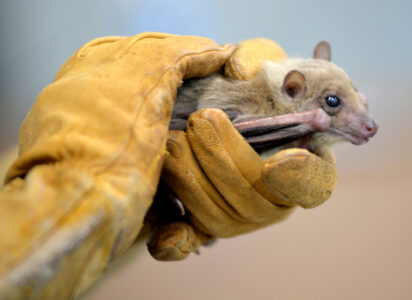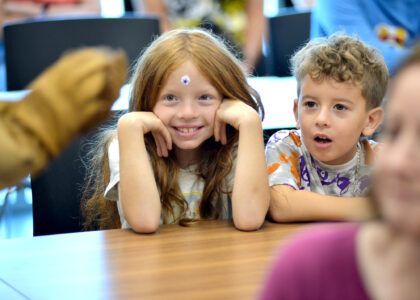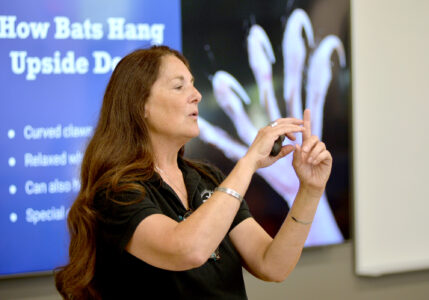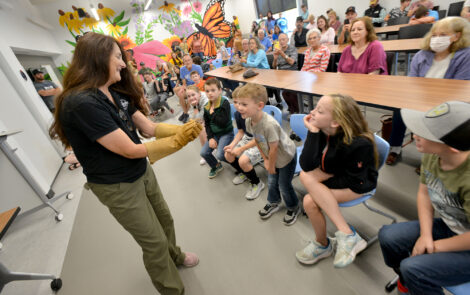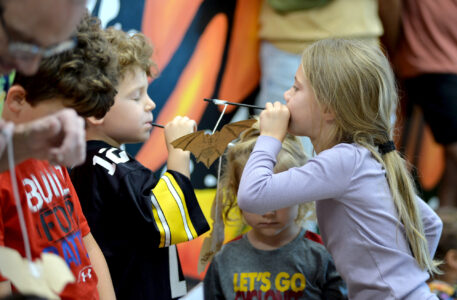Going batty over bats
Natural Naturalist debunks myths about bats at River’s Edge Discovery Center
-
-Messenger photo by Hans Madsen
“Tut,” an Egyptian fruit bat, looks around the room while being gently held by Kim White, The Natural Naturalist, during her LIve Bats program Saturday morning at the Matt Cosgrove River’s Edge Discovery Center.
-
-Messenger photo by Hans Madsen
Riley Roberts, 8, of Fort Dodge, and Milo Wilkerson, 6, of Duncombe, react Saturday morning as Kim White, The Natural Naturalist, shows them “Tut,” an Egyptian fruit bat, during her Live Bats program at the Matt Cosgrove River’s Edge Discovery Center.
-
-Messenger photo by Hans Madsen
Kim White, The Natural Naturalist, talks about how bats are able to hang upside down during her Live Bats program Saturday morning at the Matt Cosgrove River’s Edge Discovery Center.
-
-Messenger photo by Hans Madsen
Kim White, The Natural Naturalist brings “Tut,” an Egyptian fruit bat, around the room for everyone to see during her Live Bats presentation Saturday morning at the Matt Cosgrove River’s Edge Discovery Center.
-
-Messenger photo by Hans Madsen
Elouise Becker, 6, of Fort Dodge, teases Owen Crimmins, 6, of Fort Dodge, with her paper bat Saturday morning during the Live Bats program by Kim White, The Natural Naturalist at the Matt Cosgrove River’s Edge Discovery Center.
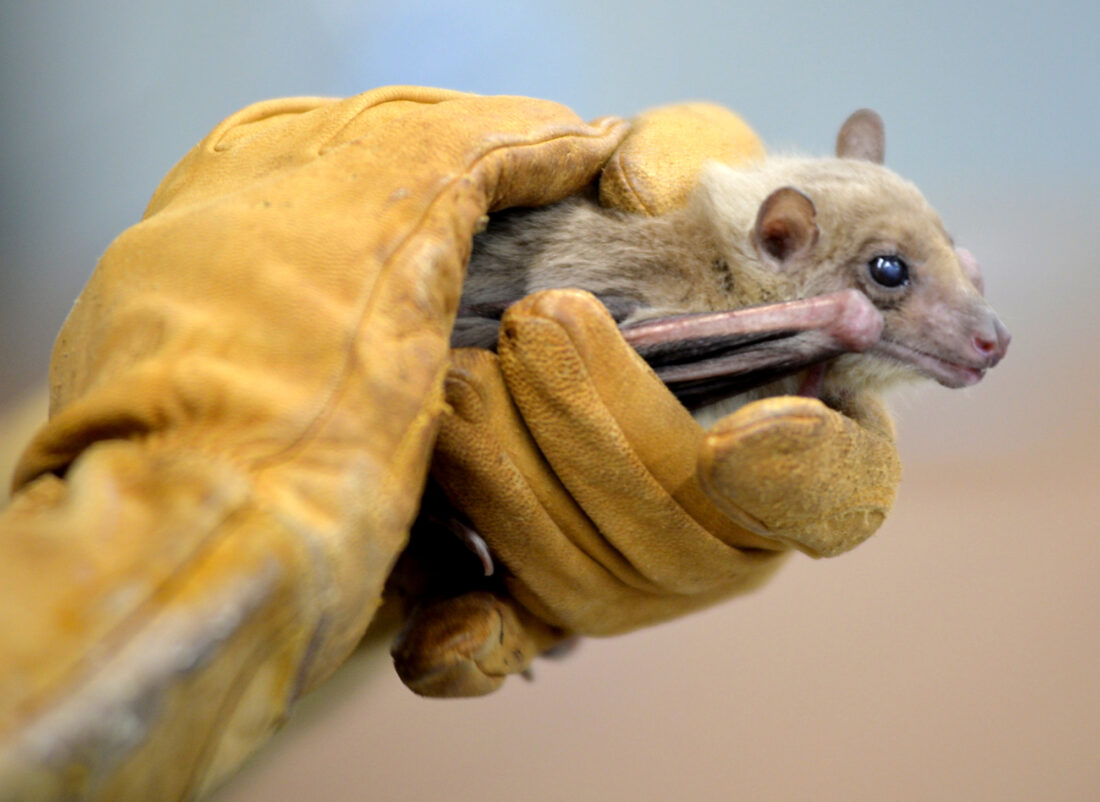
-Messenger photo by Hans Madsen
"Tut," an Egyptian fruit bat, looks around the room while being gently held by Kim White, The Natural Naturalist, during her LIve Bats program Saturday morning at the Matt Cosgrove River's Edge Discovery Center.
After talking about almost every possible aspect of bats during her Live Bats presentation Saturday morning at the Matt Cosgrove River’s Edge Discovery Center, Kim White, The Natural Naturalist, took one final audience question on a topic she apparently skipped.
“How are bats made?” a young voice asked.
Without batting an eye, White responded.
“From mommy and daddy bats,” she said.
White has a long history of loving various creatures and critters. In her youth, one of her fond memories was spending time with her dad when he returned from trips.
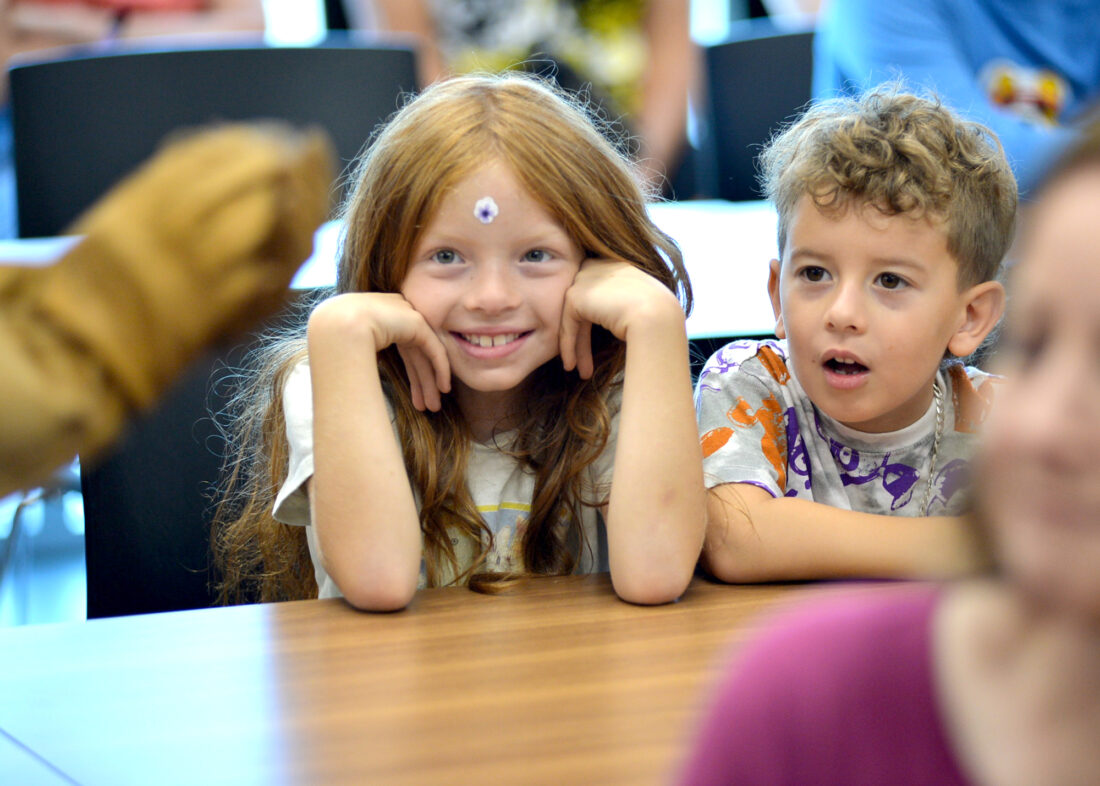
-Messenger photo by Hans Madsen
Riley Roberts, 8, of Fort Dodge, and Milo Wilkerson, 6, of Duncombe, react Saturday morning as Kim White, The Natural Naturalist, shows them "Tut," an Egyptian fruit bat, during her Live Bats program at the Matt Cosgrove River's Edge Discovery Center.
“I would sit down with my dad and see what was stuck in the grille,” she said.
There are many myths about bats.
“Bats are not blind,” she said. “All bats can see in various degrees. Bats don’t attack people; you have nothing they want. If one flies close by you, it was probably to eat a mosquito that was about to bite you; say ‘thank you.'”
They also don’t get tangled in hair, poop on people and, really, forget the whole vampire thing.
“Bats do not suck blood.” she said.
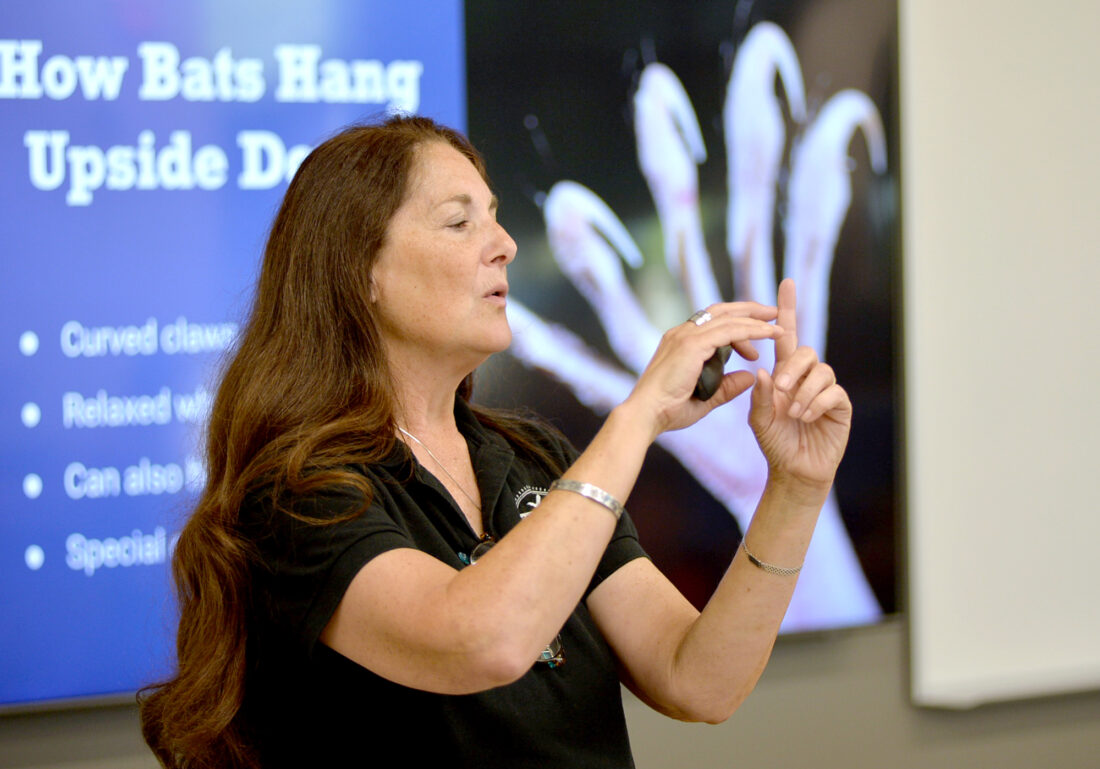
-Messenger photo by Hans Madsen
Kim White, The Natural Naturalist, talks about how bats are able to hang upside down during her Live Bats program Saturday morning at the Matt Cosgrove River's Edge Discovery Center.
“Bats are not dirty or diseased,” she said. “All of them do not have rabies. Rabies is actually rare, only 1/2 of 1 percent might be infected, although those are the likeliest for people to have contact with. If you see a bat that appears sick, don’t pick it up, don’t touch it.”
Those bats from the mommy and daddy bats, those are called pups.
Most species of bat have one a year. They groom them, feed them and take very good care of them and tell them high-pitched bed time stories.
So how do they manage to hang upside down while they rest and while they hibernate.
“The bat’s claw is like a coat hanger,” she said. “When they’re hanging, they don’t use any energy.”
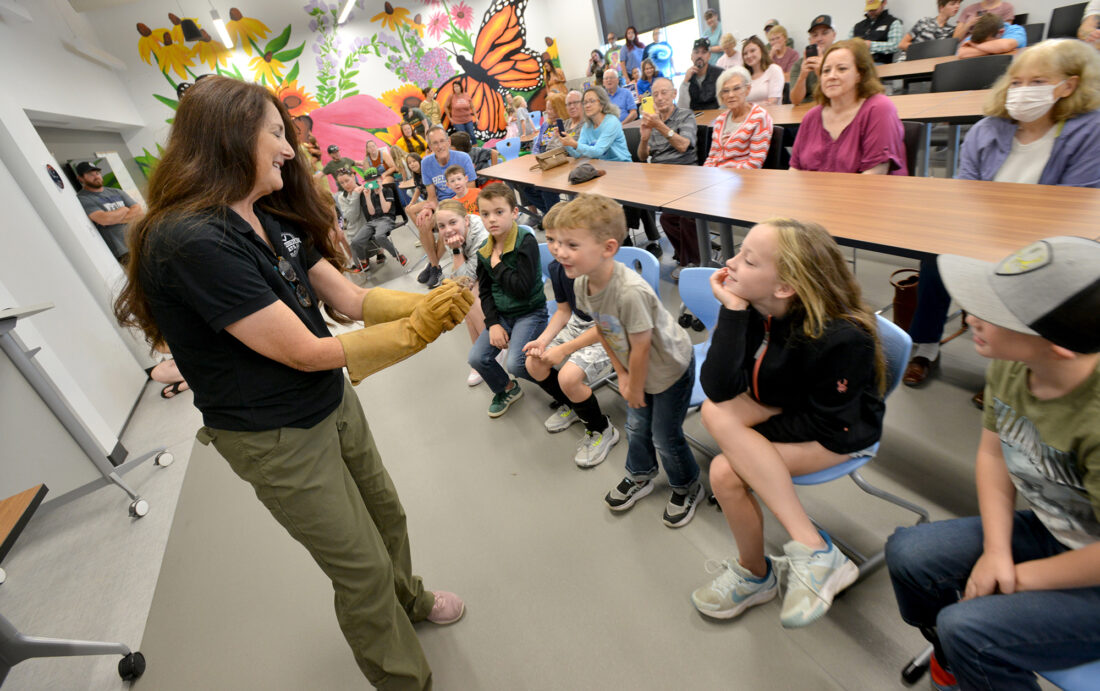
-Messenger photo by Hans Madsen
Kim White, The Natural Naturalist brings "Tut," an Egyptian fruit bat, around the room for everyone to see during her Live Bats presentation Saturday morning at the Matt Cosgrove River's Edge Discovery Center.
Nor do they get dizzy with their heads on the bottom.
“Their circulation system is opposite of hours, they get dizzy if they’re right side up,” she said.
They are also critical to our environment. Bats eat a bit more than their own weight in various insects during a night’s feeding session. Mosquitoes are a big part of that, and so are the moths that eventually lay eggs that become cut worms.
“Without the bats, we would need to use a lot more chemicals on our crops,” she said. “Without bats, we would be overrun by insects.”
They’re also pollinators.
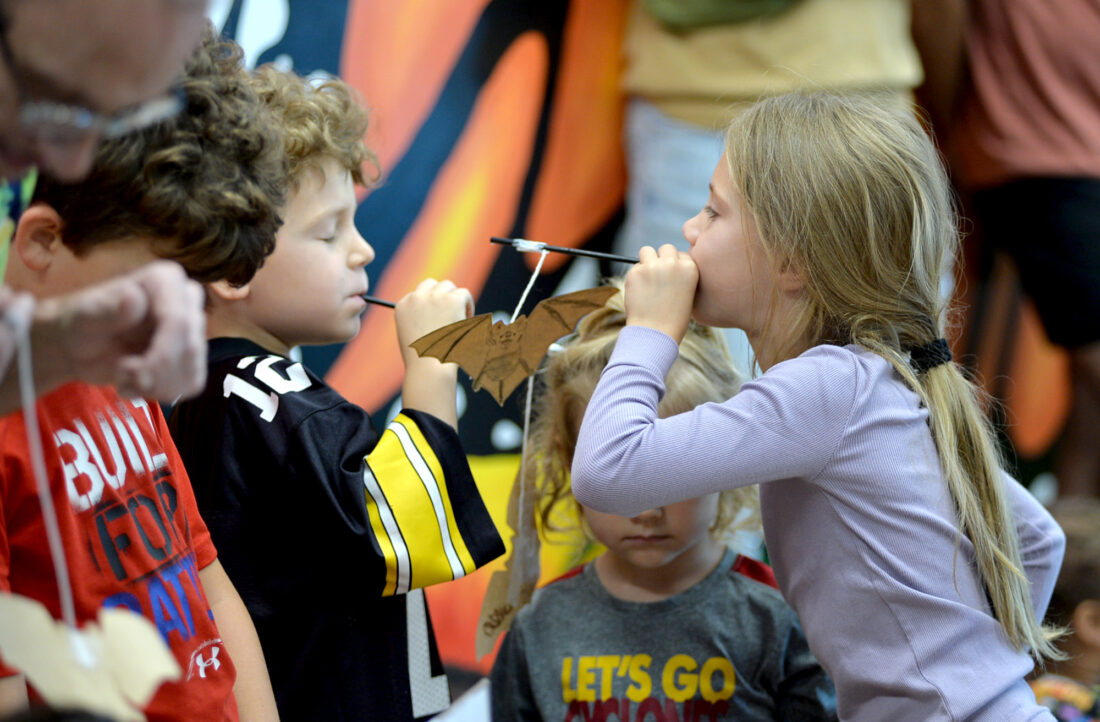
-Messenger photo by Hans Madsen
Elouise Becker, 6, of Fort Dodge, teases Owen Crimmins, 6, of Fort Dodge, with her paper bat Saturday morning during the Live Bats program by Kim White, The Natural Naturalist at the Matt Cosgrove River's Edge Discovery Center.
“If you’ve enjoyed a margarita,” she said. “Thank the bat. Without the bat, we would not have tequila. They pollinate the agave plants that it’s made from. The flowers bloom at night.”
Bats are also helping clear cut areas of the rain forest to recover. When the bats feed on fruits, they eat all of them, including the seeds. This causes the seeds to get surface marks called stratification that the seeds need to germinate.
The seeds land in the clear areas when the bats pass their guano.
“It lands with a little fertilizer package,” she said. “They’re responsible for 95 percent of the new growth.”
So how can humans help the bats?
Learning about them is one step, she said.
So is not destroying their habitat,and for the most part, leaving them alone.

